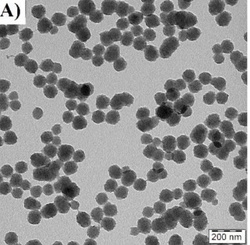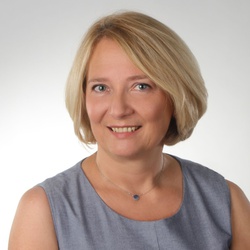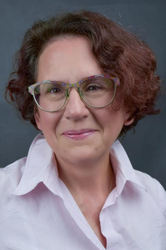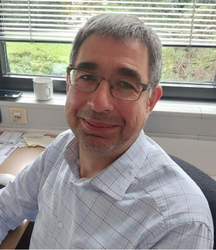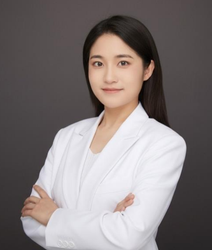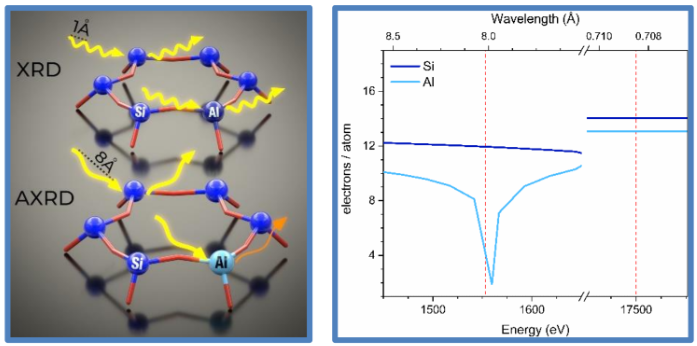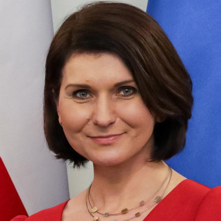Seminars
at the Department of Physical and Macromolecular ChemistryDepartmental Seminars
The Seminars of the Department of Physical and Macromolecular Chemistry are back, and in the upcoming semester they will be organized in the following way: There are going to be guest speakers and PhD students presenting during the semester.
The lectures will take place on Wednesdays in building of Chemical departments (Hlavova 8, Praha 2) at 14:00 in lecture room CH3

Seminar talk by Dr. Chaloupka (nanovlákna)
by Dr., Chaloupka
This talk follows the journey of LAM-X, a nanotechnology startup company that transforms a lab-scale nanofiber material into industrial applications. From healthcare to
water filtration and agriculture, the presentation highlights key milestones in scaling up—from lab experiments to pilot lines and industrial manufacturing. Attendees will
gain insights into commercializing academic research, overcoming scale-up challenges, and translating science into real-world impact.
Lecture Hall CH3, Faculty of Science, Hlavova 8, Praha 2
Dec. 17, 2025 - (14:00 )
This talk follows the journey of LAM-X, a nanotechnology startup company that transforms a lab-scale nanofiber material into industrial applications. From healthcare to
water filtration and agriculture, the presentation highlights key milestones in scaling up—from lab experiments to pilot lines and industrial manufacturing. Attendees will
gain insights into commercializing academic research, overcoming scale-up challenges, and translating science into real-world impact.

Presentations of 2nd year Mgr students
Lecture Hall CH3, Faculty of Science, Hlavova 8, Praha 2
Dec. 10, 2025 - (14:00 )

Presentations of 2nd year Mgr students
Lecture Hall CH3, Faculty of Science, Hlavova 8, Praha 2
Nov. 26, 2025 - (14:00 )
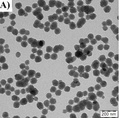
Polymer particles as contrast agents for photoacustic tomography
by Dr., M.Babic
Photoacoustic (PA) imaging detects an acoustic signal induced by light. This unique method provides simultaneously ultrasound anatomical information with high resolution along with a functional photoacoustic signal, which is created by transformation of a laser pulse to mechanical wave by some light absorbing chromophore. PA imaging shows great potential for various clinical procedures from diagnosis to therapy guidance, which arises from its ability to gather functional and molecular information in real-time regime with a high spatial resolution at clinically relevant depths together with the absence of ionizing beaming.
To maximize the contrast effect of the exogenous contrast agents (CA) in the living organism, the optical absorption of the CA should be optimally in the near-infrared (NIR) regions ~700 - 1100 nm and 1200 - 2000. We developed new heterogenous syntheses of polypyrrole (PPY) particles with PA contrast properties in NIR, which allow good control of size (10 nm step within the range 80-300 nm). Besides widely used linear water-soluble polymer stabilizers of the dispersion polymerizations, classical emulsifiers were also successfully employed in their synthesis, what broadens possibilities to employ less hydrophilic comonomers in the aqueous polymerization. Particles as CA for the PA were tested in vitro and in vivo.
Lecture Hall CH3, Faculty of Science, Hlavova 8, Praha 2
Nov. 19, 2025 - (14:00 )
Photoacoustic (PA) imaging detects an acoustic signal induced by light. This unique method provides simultaneously ultrasound anatomical information with high resolution along with a functional photoacoustic signal, which is created by transformation of a laser pulse to mechanical wave by some light absorbing chromophore. PA imaging shows great potential for various clinical procedures from diagnosis to therapy guidance, which arises from its ability to gather functional and molecular information in real-time regime with a high spatial resolution at clinically relevant depths together with the absence of ionizing beaming.
To maximize the contrast effect of the exogenous contrast agents (CA) in the living organism, the optical absorption of the CA should be optimally in the near-infrared (NIR) regions ~700 - 1100 nm and 1200 - 2000. We developed new heterogenous syntheses of polypyrrole (PPY) particles with PA contrast properties in NIR, which allow good control of size (10 nm step within the range 80-300 nm). Besides widely used linear water-soluble polymer stabilizers of the dispersion polymerizations, classical emulsifiers were also successfully employed in their synthesis, what broadens possibilities to employ less hydrophilic comonomers in the aqueous polymerization. Particles as CA for the PA were tested in vitro and in vivo.
Lecture Hall CH3, Faculty of Science, Hlavova 8, Praha 2
Catalysis, medicine and house-of-cards: zeolites and MOFs in action.
by Prof., Barbara Gil
Zeolites and metal-organic frameworks (MOFs) are two important areas of modern porous material research, connecting the fields of catalysis, medicine, and functional design. Their distinctive structures, which range from strong, crystalline networks to the complex, modular structures of MOFs, allow for selective reactivity, molecular sieving, and new bio-interactions. For a long time, zeolites have been the best way to process hydrocarbons, cut down on emissions, and drive acid site-driven transformations in catalysis. MOFs, on the other hand, have customisable pore environments and metal-node functions that expand the substrate scope and catalytic possibilities. New uses for these materials in medicine include targeted drug delivery, imaging, and therapy platforms that take use of their adjustable porosity and biocompatibility. This talk will cover interdisciplinary roles of zeolites and MOFs on the examples of the work done by Zeolite Chemistry Group in Kraków.
Lecture Hall CH3, Faculty of Science, Hlavova 8, Praha 2
Nov. 12, 2025 - (14:00 )
Zeolites and metal-organic frameworks (MOFs) are two important areas of modern porous material research, connecting the fields of catalysis, medicine, and functional design. Their distinctive structures, which range from strong, crystalline networks to the complex, modular structures of MOFs, allow for selective reactivity, molecular sieving, and new bio-interactions. For a long time, zeolites have been the best way to process hydrocarbons, cut down on emissions, and drive acid site-driven transformations in catalysis. MOFs, on the other hand, have customisable pore environments and metal-node functions that expand the substrate scope and catalytic possibilities. New uses for these materials in medicine include targeted drug delivery, imaging, and therapy platforms that take use of their adjustable porosity and biocompatibility. This talk will cover interdisciplinary roles of zeolites and MOFs on the examples of the work done by Zeolite Chemistry Group in Kraków.
Lecture Hall CH3, Faculty of Science, Hlavova 8, Praha 2
UI - počítačová lingvistika
by Dr., N. Peterek
Nov. 5, 2025 - (14:00 )
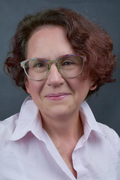
Strengthening the resilience
by Dr., S.Hoskovcová
This seminar explores the concept of resilience as a crucial skill for success and well-being during postgraduate studies. Master’s and PhD programs often present unique challenges -- academic, emotional, and personal --- that test students’ perseverance and adaptability. Through a combination of research insights, practical strategies, and real-life experiences, this session aims to help participants understand the psychological and social factors that foster resilience in demanding academic environments. Attendees will gain information about tools for managing stress, maintaining motivation, balancing competing responsibilities, and developing a sustainable mindset for long-term scholarly and professional growth.
Lecture Hall CH3, Faculty of Science, Hlavova 8, Praha 2
Oct. 29, 2025 - (14:00 )
This seminar explores the concept of resilience as a crucial skill for success and well-being during postgraduate studies. Master’s and PhD programs often present unique challenges -- academic, emotional, and personal --- that test students’ perseverance and adaptability. Through a combination of research insights, practical strategies, and real-life experiences, this session aims to help participants understand the psychological and social factors that foster resilience in demanding academic environments. Attendees will gain information about tools for managing stress, maintaining motivation, balancing competing responsibilities, and developing a sustainable mindset for long-term scholarly and professional growth.
Lecture Hall CH3, Faculty of Science, Hlavova 8, Praha 2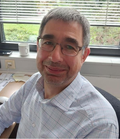
Interpenetrating Epoxy Networks Containing Diels-Alder Type Reversible Covalent Links: Shape-Constant and Self-Healing
by Dr., A.Strachota
Covalent adaptive networks (CAN) are modern polymers, which offer numerous advanced applications, in the form of pure material or as a component, starting with re-processible rigid or rubbery thermostats, through self-healing materials, up to sophisticated programmable shape-memory systems. The development of self-healing materials for electrical insulation is essential for extending both the service life and the reliability of high-voltage components. Hence, in the presented work, novel epoxy resins with temperature-activated self-healing were designed, using the interpenetrating polymer network (IPN) approach. The prepared materials combine a permanently crosslinked epoxy-amine (EP) subnetwork with a thermo-reversible Diels-Alder (DA) subnetwork. The permanent EP structure provides mechanical- and shape stability, while the reversible DA component makes possible nearly complete restoration of properties, after previous fracture followed by healing treatment. The EP network was obtained by reacting diglycidyl ether of bisphenol A (DGEBA) with poly(propylene oxide)-α,ω-diamine (D) with different chain lengths of D, whereas the DA network was formed from a furan-tetra-functionalized derivative of "D" and the diphenylmethane-derived bismaleimide (BMI) and employed the reversible addition of maleimide to furan as the reversible crosslinking mechanism.
Rheological and dynamic-mechanical thermal (DMTA) analyses were employed to find optimal curing protocols, component ratios, and healing conditions. Systems with shortest "D" chains showed the best dielectric performance, while longer "D" minimized the occurrence of side reactions during synthesis and healing. The most promising balance between self-healing efficiency and insulating properties was achieved for the IPN system containing “D” with the size of 400 g/mol. Our results highlight the potential of DA-based IPNs in smart electrical insulation applications.
Lecture Hall CH3, Faculty of Science, Hlavova 8, Praha 2
Oct. 22, 2025 - (14:00 )
Covalent adaptive networks (CAN) are modern polymers, which offer numerous advanced applications, in the form of pure material or as a component, starting with re-processible rigid or rubbery thermostats, through self-healing materials, up to sophisticated programmable shape-memory systems. The development of self-healing materials for electrical insulation is essential for extending both the service life and the reliability of high-voltage components. Hence, in the presented work, novel epoxy resins with temperature-activated self-healing were designed, using the interpenetrating polymer network (IPN) approach. The prepared materials combine a permanently crosslinked epoxy-amine (EP) subnetwork with a thermo-reversible Diels-Alder (DA) subnetwork. The permanent EP structure provides mechanical- and shape stability, while the reversible DA component makes possible nearly complete restoration of properties, after previous fracture followed by healing treatment. The EP network was obtained by reacting diglycidyl ether of bisphenol A (DGEBA) with poly(propylene oxide)-α,ω-diamine (D) with different chain lengths of D, whereas the DA network was formed from a furan-tetra-functionalized derivative of "D" and the diphenylmethane-derived bismaleimide (BMI) and employed the reversible addition of maleimide to furan as the reversible crosslinking mechanism.
Rheological and dynamic-mechanical thermal (DMTA) analyses were employed to find optimal curing protocols, component ratios, and healing conditions. Systems with shortest "D" chains showed the best dielectric performance, while longer "D" minimized the occurrence of side reactions during synthesis and healing. The most promising balance between self-healing efficiency and insulating properties was achieved for the IPN system containing “D” with the size of 400 g/mol. Our results highlight the potential of DA-based IPNs in smart electrical insulation applications.
Lecture Hall CH3, Faculty of Science, Hlavova 8, Praha 2
Using Magnetic Fields to Control Transport in Electrochemical Systems
by Ph.D., Rui Gao
We have shown that magnetic fields can be used to increase mass transport in electrochemical systems through magnetohydrodynamic effects (MHD). The Lorentz force acting upon ions moving in the solution generates fluidic convection that enhances mass transport and modifies the observed reactivity. The strength of this fluidic convection non-linearly increases by either: i) decreasing viscosity of the solution or ii) increasing the electrochemical current density. We demonstrated that magnetic fields parallel to the surface of the cathode can help increase mass transport and increase the selectivity for the reduction of CO2 compared to the reduction of protons to hydrogen. Then we demonstrated that magnetic fields can be used to generate complex (i.e., oscillatory) behavior during the electrocatalytic oxidation of glycerol and modified the product distribution. This is attributed to periods of low mass transport during oxidation of glycerol to glycolic acid followed by periods of high mass transport where the glycolic acid moves to the bulk of the solution - preventing further oxidation.
Lecture Hall CH3, Faculty of Science, Hlavova 8, Praha 2
Oct. 15, 2025 - (14:00 )
We have shown that magnetic fields can be used to increase mass transport in electrochemical systems through magnetohydrodynamic effects (MHD). The Lorentz force acting upon ions moving in the solution generates fluidic convection that enhances mass transport and modifies the observed reactivity. The strength of this fluidic convection non-linearly increases by either: i) decreasing viscosity of the solution or ii) increasing the electrochemical current density. We demonstrated that magnetic fields parallel to the surface of the cathode can help increase mass transport and increase the selectivity for the reduction of CO2 compared to the reduction of protons to hydrogen. Then we demonstrated that magnetic fields can be used to generate complex (i.e., oscillatory) behavior during the electrocatalytic oxidation of glycerol and modified the product distribution. This is attributed to periods of low mass transport during oxidation of glycerol to glycolic acid followed by periods of high mass transport where the glycolic acid moves to the bulk of the solution - preventing further oxidation.
Lecture Hall CH3, Faculty of Science, Hlavova 8, Praha 2
Determining Short- and Long-Range Aluminium Ordering in Zeolite Structures
by Dr., Przemyslaw Rzepka
The short-range order of aluminum atoms within periodic zeolite structures critically influences the presence and behavior of catalytically active centers. In Al-rich zeolites (Si/Al<10), Al-O-Si-O-Al sequences stabilize divalent cations or adjacent acid sites. In Si-rich zeolites (Si/Al > 10), Al atoms
emerge as isolated species, Al pairs (Al(-O-Si-O-)1-2Al), or close Al atoms (Al(-O-Si-O-)3Al). Zeolites with a higher fraction of Al pairs exhibit greater catalytic activity. The local organization of Al atoms is influenced by synthesis conditions, offering a powerful means to tailor zeolite structures for optimizing active centers and fine-tuning catalytic properties. However, no universal method currently exists to directly identify the specific T-sites in a zeolite framework occupied by Al atoms.
Lecture Hall CH3, Faculty of Science, Hlavova 8, Praha 2
Oct. 1, 2025 - (14:00 )
The short-range order of aluminum atoms within periodic zeolite structures critically influences the presence and behavior of catalytically active centers. In Al-rich zeolites (Si/Al<10), Al-O-Si-O-Al sequences stabilize divalent cations or adjacent acid sites. In Si-rich zeolites (Si/Al > 10), Al atoms
emerge as isolated species, Al pairs (Al(-O-Si-O-)1-2Al), or close Al atoms (Al(-O-Si-O-)3Al). Zeolites with a higher fraction of Al pairs exhibit greater catalytic activity. The local organization of Al atoms is influenced by synthesis conditions, offering a powerful means to tailor zeolite structures for optimizing active centers and fine-tuning catalytic properties. However, no universal method currently exists to directly identify the specific T-sites in a zeolite framework occupied by Al atoms.

There is Still Plenty of Room for IR Spectroscopy in Catalysis
Developing novel catalysts requires a comprehensive characterization of the potential and existing catalysts. The catalytic activity is intrinsically linked to the active centres of the catalyst. Therefore, it is not surprising that the question of catalytic activity is, in fact, a question of active sites. How can we identify the active sites responsible for the desired activity among many other centers? Can we also quantify these active sites? Furthermore, by differentiating between reactive intermediates and spectator species, can we understand the reaction pathway that each active site influences? The best candidates for answering these questions are IR and UV-Vis spectroscopies.
Both provide a complete picture of the catalytic process by fusing quantitative and qualitative insights. Both aid in tracking the reaction process and enhance our understanding of the role of active sites. As scientists, we still face the challenge of examining active catalysts in real "working conditions”. We investigate extremely fast processes, such as diffusion, adsorption, and rearrangement of molecules on the catalyst surface, which usually take place in fractions of seconds. Time-resolved mode (rapid scan) IR measurements supported by 2D correlation analysis and Multivariate Curve Resolution-Alternating Least Squares algorithms are extremely effective in isolating species relevant to the catalytic process from many others. This allows us to determine the sequence of events in the catalytic nanoscale world. Finally, combining spectroscopic methods with measurements of catalyst activity and selectivity, via mass spectrometry and gas chromatography (GC) analysis, facilitates the assessment of the reaction's progress in real time.
Lecture hall CH2, Faculty of Science, Hlavova 8, Praha 2
May 28, 2025 - (14:00 )
Developing novel catalysts requires a comprehensive characterization of the potential and existing catalysts. The catalytic activity is intrinsically linked to the active centres of the catalyst. Therefore, it is not surprising that the question of catalytic activity is, in fact, a question of active sites. How can we identify the active sites responsible for the desired activity among many other centers? Can we also quantify these active sites? Furthermore, by differentiating between reactive intermediates and spectator species, can we understand the reaction pathway that each active site influences? The best candidates for answering these questions are IR and UV-Vis spectroscopies.
Both provide a complete picture of the catalytic process by fusing quantitative and qualitative insights. Both aid in tracking the reaction process and enhance our understanding of the role of active sites. As scientists, we still face the challenge of examining active catalysts in real "working conditions”. We investigate extremely fast processes, such as diffusion, adsorption, and rearrangement of molecules on the catalyst surface, which usually take place in fractions of seconds. Time-resolved mode (rapid scan) IR measurements supported by 2D correlation analysis and Multivariate Curve Resolution-Alternating Least Squares algorithms are extremely effective in isolating species relevant to the catalytic process from many others. This allows us to determine the sequence of events in the catalytic nanoscale world. Finally, combining spectroscopic methods with measurements of catalyst activity and selectivity, via mass spectrometry and gas chromatography (GC) analysis, facilitates the assessment of the reaction's progress in real time.
